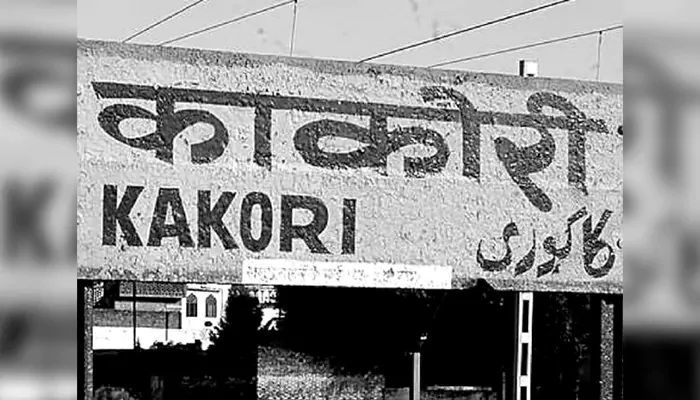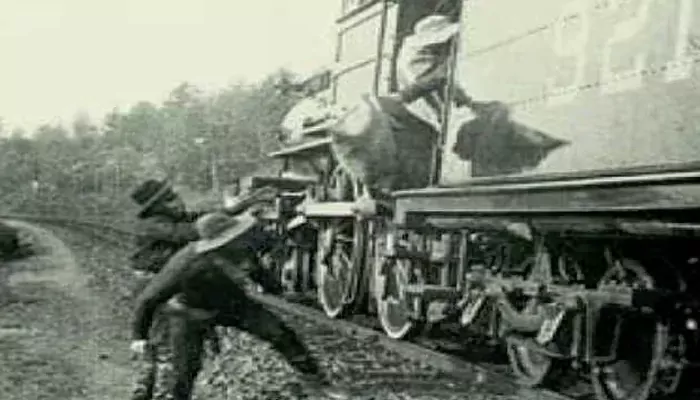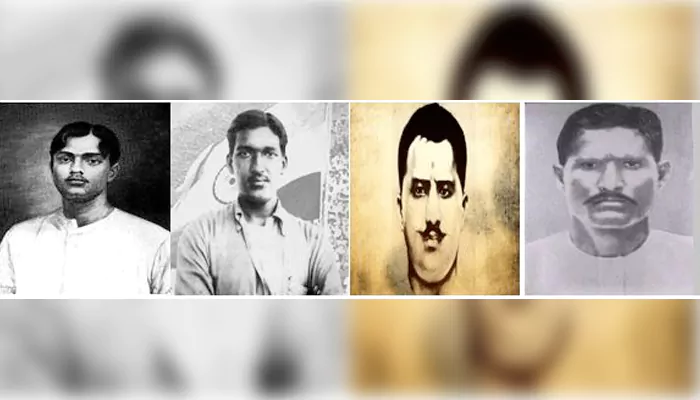
How a daring robbery at Kakori rattled the British Empire and reignited the flames of armed resistance
It was the night of August 9, 1925. The Saharanpur–Lucknow passenger train rumbled along its usual route through the tranquil countryside of Uttar Pradesh, carrying unsuspecting passengers, postal bags, and a heavy iron safe filled with government cash destined for the British Treasury in Lucknow. At a sleepy railway halt called Kakori, the train screeched to an abrupt stop. Armed men stormed the guard's van, forcing it open at gunpoint.
What unfolded next was no mere robbery—instead, it was a carefully planned act of defiance by the Hindustan Republican Association (HRA), a group of young revolutionaries determined to shake the British Raj to its foundations.
Led by Ram Prasad Bismil, the rebels subdued guards and passengers, seized the safe, and vanished into the night with the funds. Their aim was not greed but revolution—to fund India's armed struggle for independence.

(Credit: Cultural India )
The HRA was established in 1924 by radicals such as Bismil, Ashfaqulla Khan, Sachindra Nath Bakshi, Sachindranath Sanyal, and Jogesh Chandra Chatterjee. They believed that passive petitions and peaceful protests alone could not overthrow a colonial power heavily armed. Inspired by Bengal’s earlier revolutionaries like Khudiram Bose, they aimed to train cadres, acquire weapons, and initiate an armed uprising.
However, revolutions demand funds, and the HRA’s treasury was nearly empty. The idea of attacking a government train carrying tax revenue seemed like an ideal opportunity. Though some members feared the repercussions, the plan was approved by the majority. The Kakori robbery was designed to undermine British prestige and support a sustained movement.

(Credit: First Post )
The heist was carried out with military precision. Once the safe was pried open—legend has it that Ashfaqulla Khan was the one who finally cracked it—the group disappeared with the cash. However, their bold act prompted swift and brutal retaliation. Within weeks, the colonial authorities launched a major crackdown, arresting over 40 suspects linked to the HRA.
What followed was the infamous Kakori Conspiracy Trial in Lucknow, a spectacle aimed at crushing revolutionary spirit. For 18 months, the British presented coerced testimonies and circumstantial evidence against the accused. Despite spirited defences by nationalist lawyers, 17 men were convicted.
On April 6, 1927, the court delivered its brutal verdict.
Ram Prasad Bismil, Ashfaqulla Khan, Rajendra Lahiri, and Roshan Singh were sentenced to death.
Several others faced transportation for life or lengthy prison sentences.
A few were acquitted or became approvers to save themselves.
The executions of the four martyrs in December 1927 sent shockwaves across India. The British dismissed public petitions and appeals from nationalist leaders to commute the sentences.
Yet, instead of quelling the movement, these executions transformed these young men into immortal symbols of sacrifice, inspiring a generation that would later include Bhagat Singh and Chandrashekhar Azad.

(Credit: GS Score )
The Kakori train robbery was not just a daring act of theft; it was a political statement. It exposed the vulnerability of the British administration and showed that the revolutionaries could strike at the very core of colonial power. The funds seized were modest compared to the bloodshed involved, yet the event sparked a wave of enthusiasm for India’s freedom struggle, especially among young people.
It also marked a turning point in the debate over the methods of achieving independence. While Gandhi’s Non-Cooperation Movement had inspired millions with its emphasis on non-violence, Kakori demonstrated that some Indians were willing to risk everything for a more radical approach.